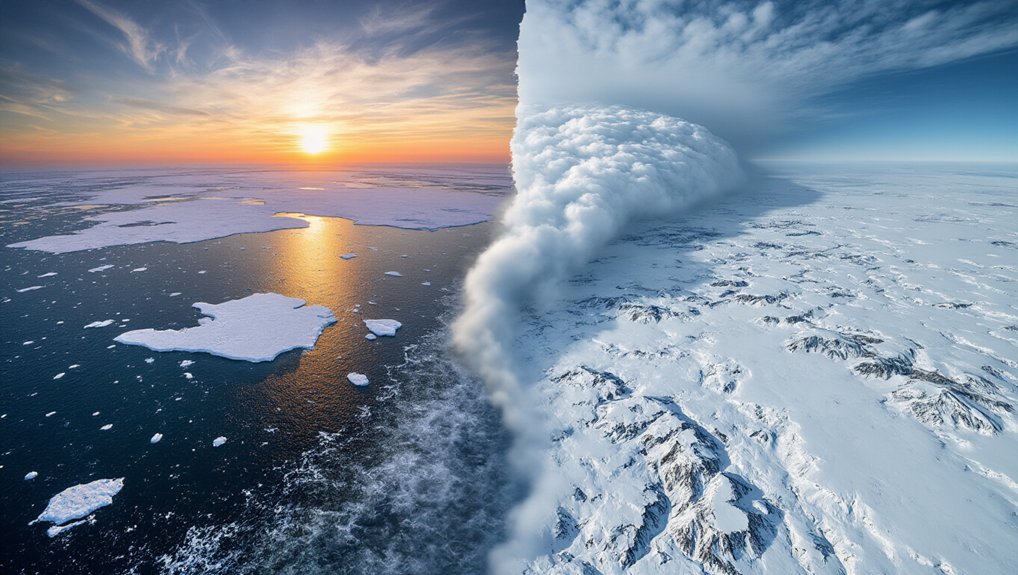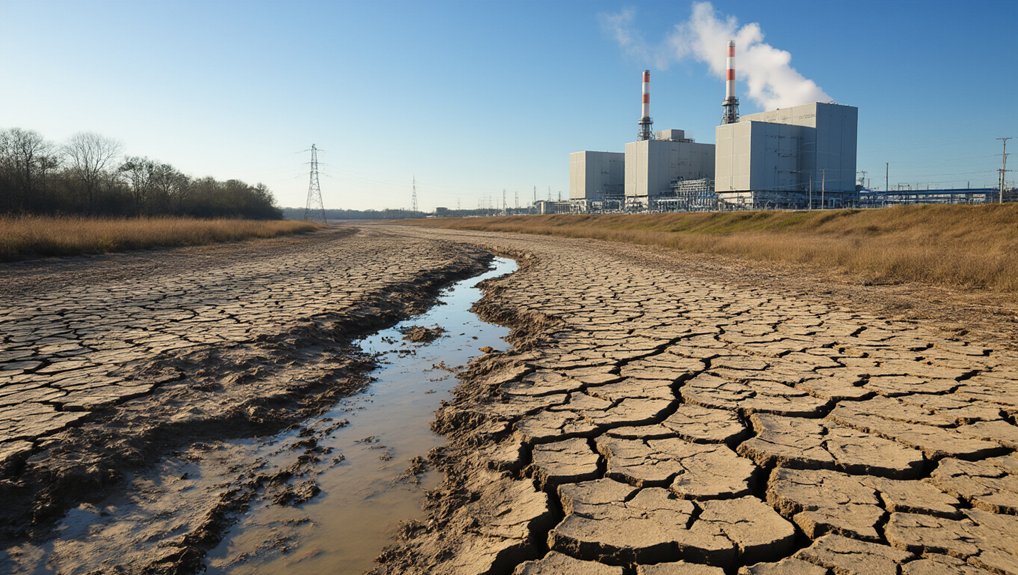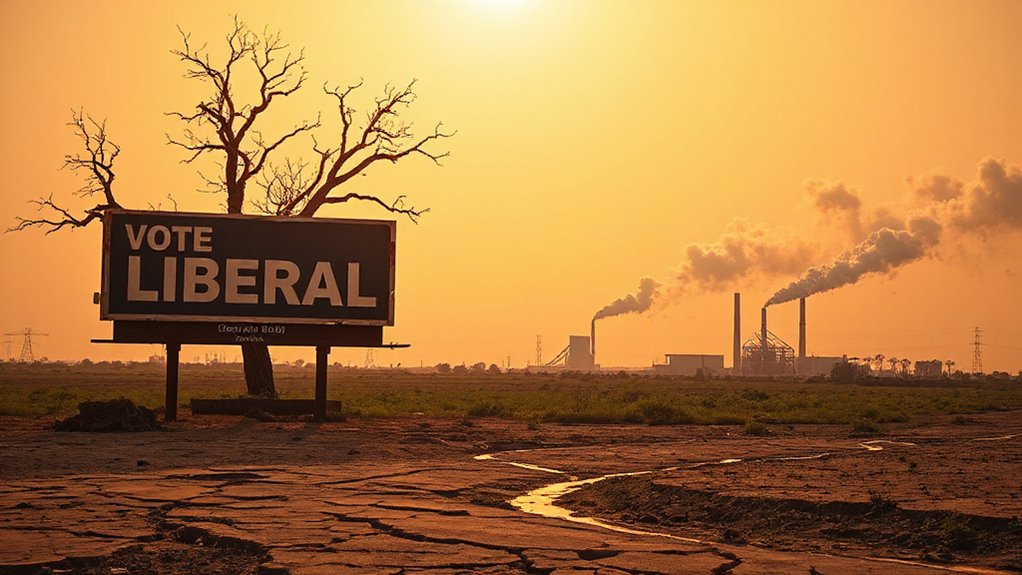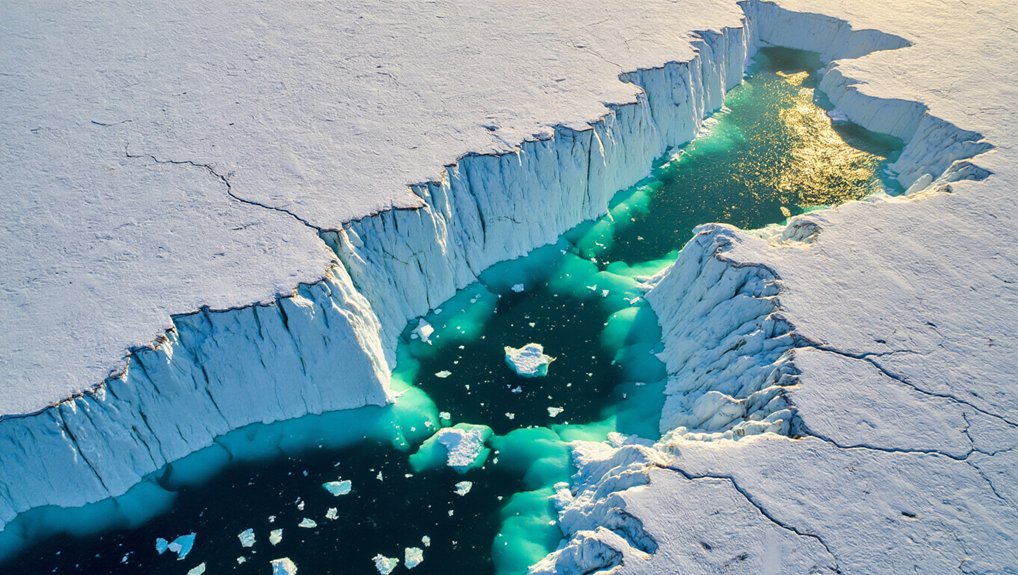While scientists have long predicted the Arctic would warm faster than the rest of the planet, nobody expected this. In February 2025, North Pole temperatures shot above freezing—a jaw-dropping 34°C warmer than historical averages. Let that sink in. Parts of the Arctic were literally 34 degrees warmer than they should be.
It’s no fluke. We’ve now had 24 straight months of global temperatures exceeding the 1.5°C threshold scientists warned about. January 2025? Hottest January ever recorded. The polynomial trends suggest we could hit 3°C by 2026 and a terrifying 5°C by 2027. Not in a century. Not in decades. Soon.
Meanwhile, Americans are shoveling record snow while complaining about “global warming.” Ironic? Nope, just physics.
The culprit? Our jet stream‘s gone rogue. This high-altitude wind that once flowed predictably around the Northern Hemisphere now meanders like a drunk trying to walk a straight line. It’s allowing unprecedented warm air intrusions into the Arctic while simultaneously pushing frigid polar air southward into America and Eurasia. The deformation of this critical wind system is causing extreme cold air descents that create a false impression of global cooling in certain regions.
Arctic sea ice is taking a beating. January and February 2025 both set dismal new records for low ice extent—8% below average and falling fast. Less white ice means more dark ocean absorbing sunlight. More heat. More melting. Classic feedback loop.
The Gulf Stream’s pushing warm Atlantic water northward at alarming rates. Winds are accelerating. Everything’s accelerating.
Here’s the twist: all these mechanisms feed each other. Less ice means more solar absorption. More warming means more permafrost thaw releasing greenhouse gases. More disruption to the jet stream means more extreme weather everywhere. The formation of a freshwater lid in the North Atlantic further complicates ocean heat distribution patterns.









